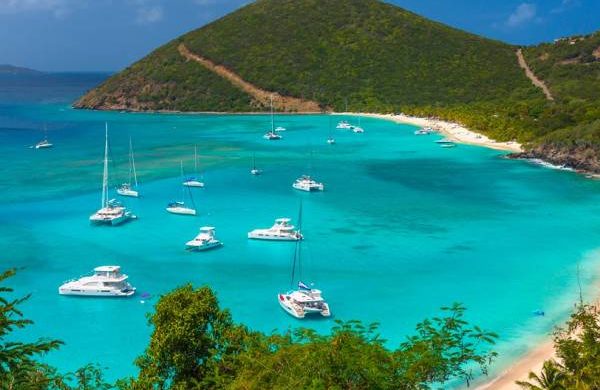An extinct tortoise species that accidentally tumbled into a water-filled limestone sinkhole in the Bahamas about 1,000 years ago has finally made its way out, with much of its DNA intact.
As the first sample of ancient DNA retrieved from an extinct tropical species, this genetic material could help provide insights into the history of the Caribbean tropics and the reptiles that dominated them, said University of Florida ornithologist David Steadman. It could also offer clues to the region’s future, as the tropics undergo significant transformation due to climate change.
“This is the first time anyone has been able to put a tropical species into an evolutionary context with molecular data,” said Steadman, an ornithology curator at the Florida Museum of Natural History on the UF campus and co-author of the study discussing the finding.
“And being able to fit together the tortoise’s evolutionary history together will help us better understand today’s tropical species, many of which are endangered.”

The fossil skull of the Bahamian tortoise, which yielded the first ancient tropical DNA. Photo courtesy of Nancy Albury.
He called the finding “boundary-pushing” and said that even after DNA was extracted from the tortoise bones, the researchers were not optimistic that much information could be gleamed from it.
“Not only did we have DNA, we were surprised to find we could amplify it and sequence DNA beyond what we had available,” Steadman said.
Most ancient DNA has come from mammals that lived in temperate regions, he said.
“The two things that are really good for the long-term preservation of DNA are coldness and dryness,” Steadman said. “And the tropics typically provide neither one.”
A plastic 3-D model created from the ancient tortoise’s shell rests easily in two hands, about the size of a football. Bite marks from crocodiles and other predators are visible on the surface.
“The tortoise went through a pretty ugly existence,” he said.
After retrieving the tortoise from Sawmill Sink, a deep blue hole in the Bahamas with steep vertical walls, scuba divers found not only the shell intact, but the entire skeleton.
“That’s really unheard of in the fossil record, especially in the West Indies,” Steadman said.

Two divers explore deep inside a blue hole in the Bahamas. Photo by Brian Kakuk
Access to the tortoise’s skeleton and DNA enabled Florida Museum herpetologist emeritus and study co-author Richard Franz to describe its anatomy and structure in as much detail as modern species. Divers found other giant tortoises preserved in the water, but performed DNA analysis on only one for the published study.
“In the fossil record, so many species are described just from a few fragments that exist, and while it’s a lot better than nothing, you don’t get to characterize the entire critter,” Steadman said. “Whereas, with this tortoise, well, here it is.”
The tortoise skeleton contained bone collagen, a protein, which allowed scientists to radiocarbon date the animal and find out when it died. Several other tortoises that were also found in the Bahamas—though not as well preserved—helped researchers determine the species went extinct about 780 years ago, soon after the arrival of human settlers in the area.
“There’s a correlation that the arrival of humans spelled the demise of the tortoises,” Steadman said. “It’s probably a blend of direct hunting and habitat loss as the humans started burning the forests in the dry season.”
The chemical composition of the water in Sawmill Sink prevented the decay of animals that fell into the water, died about fell to the bottom 80 feet down. The secret: water with no oxygen. The water in Sawmill Sink is stratified, or has several layers. The decay of plants and animals removes the oxygen from the water deeper than 70 feet, helping to preserve the fossils.

Photo courtesy of Nancy Albury.
Although the conditions in Sawmill Sink are an exception rather than a rule, the findings give scientists more hope of finding material from other extinct tropical species.
“We now know so much about the tortoise’s anatomy, how it lived and its evolutionary context,” he said. “To be able to do that with other species is a goal.”



